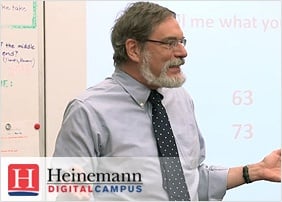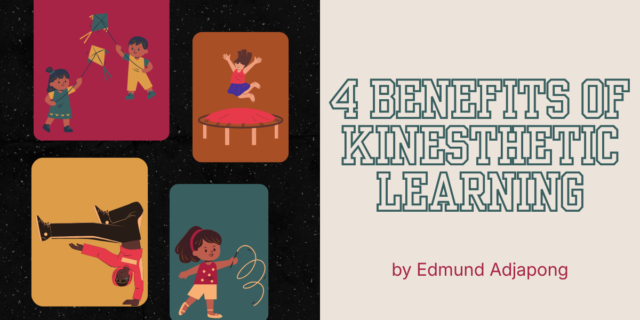Written by: Katherine Bryant, of Heinemann Publishing
Written by: Katherine Bryant, of Heinemann Publishing
 I had the joy of helping Steve Leinwand develop this course. One of my favorite things about it is how Steve focuses on just a few powerful moves that teachers can make—moves that don’t require dismantling everything they already do but are either easy additions or small changes that have a big impact.
I had the joy of helping Steve Leinwand develop this course. One of my favorite things about it is how Steve focuses on just a few powerful moves that teachers can make—moves that don’t require dismantling everything they already do but are either easy additions or small changes that have a big impact.
A pairing that shows up several times is the combination of “Tell Me What You See” and “Convince Me.” Steve focuses on them especially in sessions 1 and 3, but they’re at the core of a lot of the classroom work you’ll see throughout the course. Sitting in the back of classrooms while Steve used these routines with kids, I was impressed by the engagement and mathematical thinking these seemingly simple activities produced.
First, Steve puts a scenario—a table, a situation, even just two numbers—in front of the students and asks them to tell first each other, then the class, things they see. Sometimes he also asks them what questions they have. (Those of you familiar with Max Ray’s Powerful Problem Solving and the work of the Math Forum will recognize a kinship here with their “notice and wonder” routines.) Then, when students have seen something or made a claim about the information in front of them, he follows with two powerful words: “Convince me.” This gives students the space and opportunity to share their thinking and reasoning and justify their results.
Here’s an example from the course: two videos that show a group of fourth graders from Washington, DC, first talking about what they see, then justifying one of their statements.
There’s so much mathematical thinking going on here, brought out by a couple of very simple teaching moves and routines. The course is full of this kind of moment, whether it’s sixth graders working with ratio tables, third graders sharing their strategies for figuring out multiplication facts, or fifth graders talking about division.
The simple strategies Steve suggests help students not only express their own ideas but also understand and learn from other students’ approaches. One of my favorite quotes in the course is a comment by fifth grader Leila: “There’s a lot of different ways . . . which is good because if you don’t understand how to do one way, you can use a different way.” Helping teachers help students develop an array of different ways to do and think about math, not just find one path to one right answer, is what Steve’s work is all about.
-Katherine Bryant
 Want to learn more about the Heinemann Digital Campus?
Want to learn more about the Heinemann Digital Campus?
Start your free 30-day trial now.
http://www.heinemann.com/digitalcampus/default.aspx


